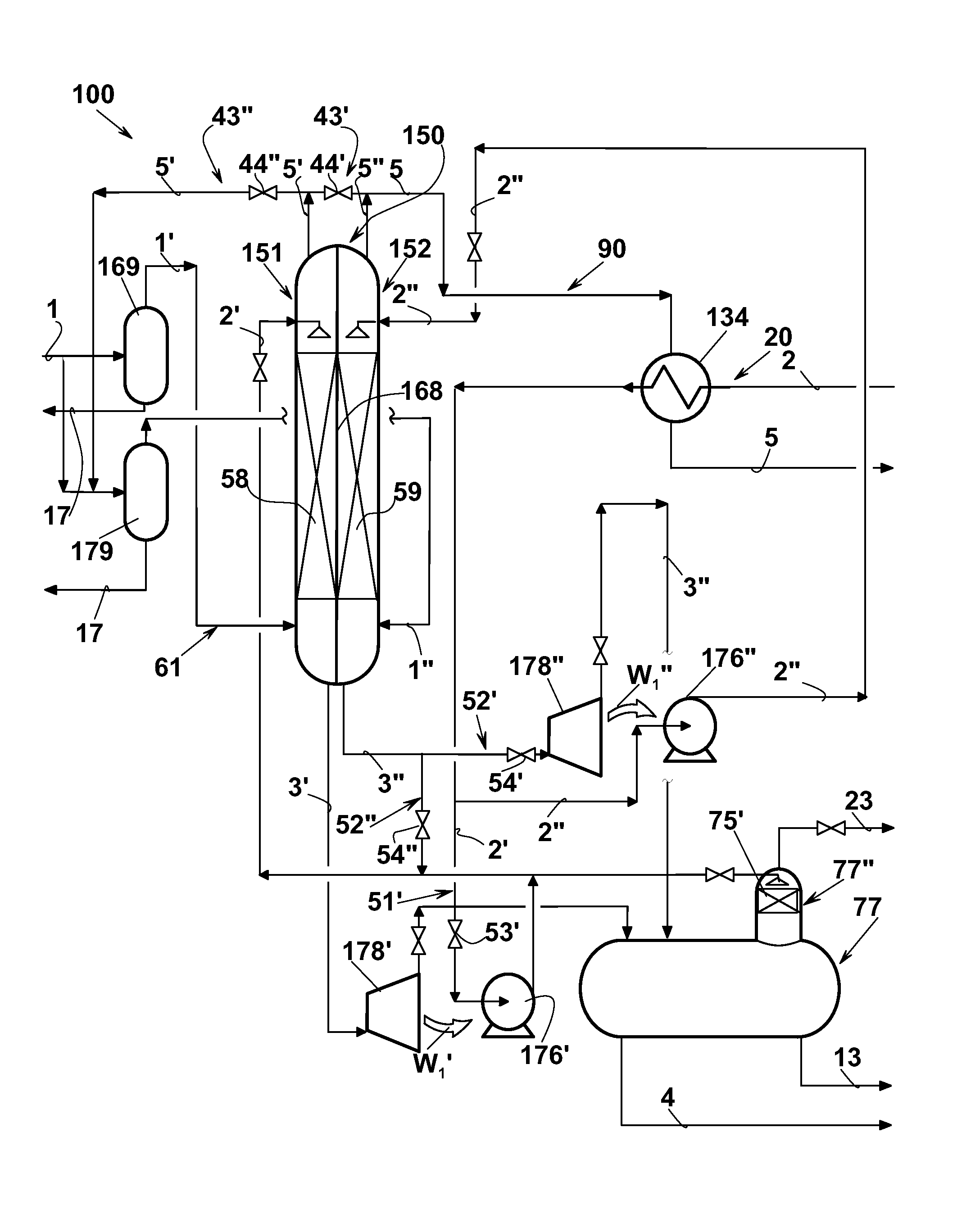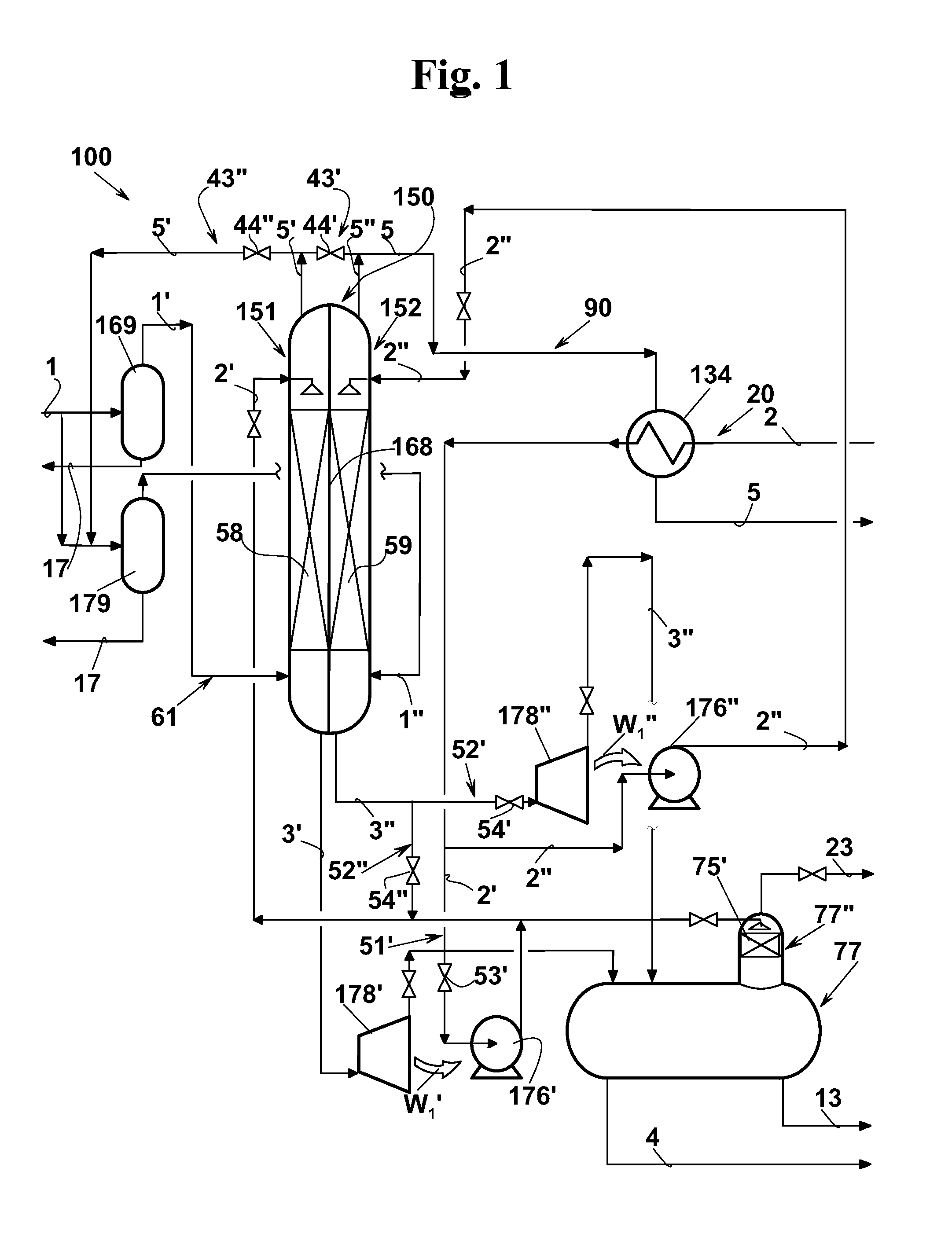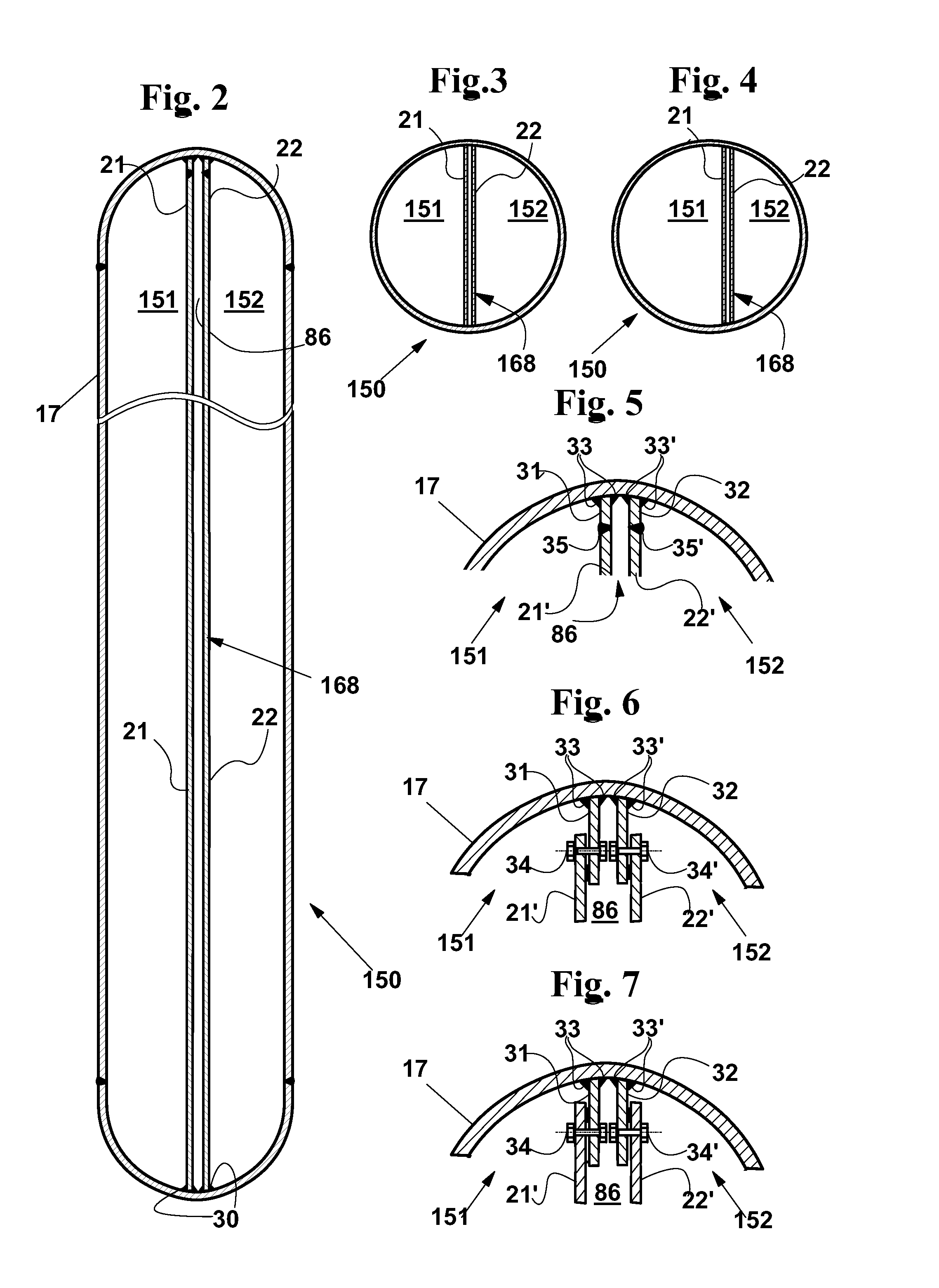Method and apparatus for sweetening and/or dehydrating a hydrocarbon gas, in particular a natural gas
a technology of hydrocarbon gas and method, which is applied in the direction of gaseous fuels, sustainable manufacturing/processing, and separation processes, etc., can solve the problems of ice and hydrocarbon hydrate formation, blockage of passageways, and unsuitable gas for a large number of uses
- Summary
- Abstract
- Description
- Claims
- Application Information
AI Technical Summary
Benefits of technology
Problems solved by technology
Method used
Image
Examples
Embodiment Construction
[0148]With reference to FIG. 1, a method and an apparatus 100 are described for a treatment of removing a component from a hydrocarbon gas stream, in particular a sweetening treatment of an acid natural gas. A vertical sweetening tower 150 comprises an inner partition wall 168 that extends longitudinally within tower 150. Inner partition wall 168 defines a first sweetening chamber 151 and a second sweetening chamber 152 within tower 150, which are separated by inner partition wall 168.
[0149]At least one part 1′ of acid gas 1, as this is extracted from a well or from a gasfield, is subjected to a gravitational solid dust and liquid matter removal in a cyclone separator 169, or in an equivalent equipment. Acid gas 1 is then fed into first sweetening chamber 151 through a second inlet port 172. Acid gas 1 turns into an at least partially sweetened gas 5′ in first sweetening chamber 151, from which it is extracted through a second outlet port 174. First sweetening chamber 151 is also su...
PUM
| Property | Measurement | Unit |
|---|---|---|
| pressure | aaaaa | aaaaa |
| pressure | aaaaa | aaaaa |
| height | aaaaa | aaaaa |
Abstract
Description
Claims
Application Information
 Login to View More
Login to View More - R&D
- Intellectual Property
- Life Sciences
- Materials
- Tech Scout
- Unparalleled Data Quality
- Higher Quality Content
- 60% Fewer Hallucinations
Browse by: Latest US Patents, China's latest patents, Technical Efficacy Thesaurus, Application Domain, Technology Topic, Popular Technical Reports.
© 2025 PatSnap. All rights reserved.Legal|Privacy policy|Modern Slavery Act Transparency Statement|Sitemap|About US| Contact US: help@patsnap.com



